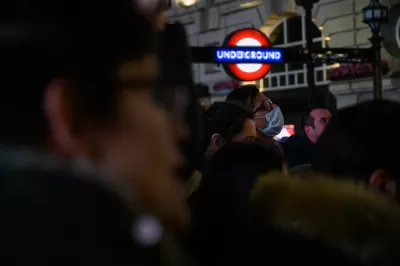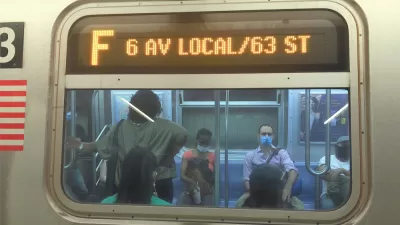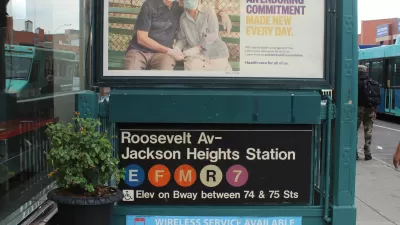Public transit cities around the world are operating well below pre-pandemic ridership levels, with many cutting service and no real clear idea about how and when a recovery will begin.

One of the first signs of the catastrophic consequences of the novel coronavirus in the United States in the spring of 2020 was the swift decline in public transit ridership. Since March 2020, U.S. transit agencies have cut service and sounded repeated alarms about a fiscal crisis and searched for ways to safely provide mobility options for essential and transit-dependent workers. Repeated infusions of relief funds from the federal government offer only a temporary reprieve from the fundamental realities of transit during the pandemic.
And transit isn't only struggling in the United States. As documented in a New York Times article authored by Somini Sengupta, Geneva Abdul, Manuela Andreoni, and Veronica Penney, a similar story is playing out in cities all over the globe.
In London, Piccadilly Circus station is nearly empty on a weekday morning, while in Delhi, the Metro ferries fewer than half of the riders it used to. In Rio, bus drivers are on strike, and in New York City, subway traffic is at just a third of normal volume.
The ongoing crisis facing public transit seems to compound concern. As noted in the article, the decline in transit ridership "spell disaster" for efforts to reduce public health risks like the greenhouse gas emissions that are causing climate change. "Public transit is a relatively simple remedy for urban greenhouse gas emissions, not to mention air quality, noise and congestion," according to the article.
The article seems primed for a deep dive, but stops short, probably because of the ongoing uncertainty about the questions of how to move to a post-pandemic normal. One source in the article, Mohamed Mezghani, head of the International Association of Public Transport, says transit systems should start upgrading transit systems now to attract riders back to transit in the future.
FULL STORY: After a year of the pandemic, public transit around the world is hanging by a thread.

Alabama: Trump Terminates Settlements for Black Communities Harmed By Raw Sewage
Trump deemed the landmark civil rights agreement “illegal DEI and environmental justice policy.”

Planetizen Federal Action Tracker
A weekly monitor of how Trump’s orders and actions are impacting planners and planning in America.

The 120 Year Old Tiny Home Villages That Sheltered San Francisco’s Earthquake Refugees
More than a century ago, San Francisco mobilized to house thousands of residents displaced by the 1906 earthquake. Could their strategy offer a model for the present?

Ken Jennings Launches Transit Web Series
The Jeopardy champ wants you to ride public transit.

BLM To Rescind Public Lands Rule
The change will downgrade conservation, once again putting federal land at risk for mining and other extractive uses.

Indy Neighborhood Group Builds Temporary Multi-Use Path
Community members, aided in part by funding from the city, repurposed a vehicle lane to create a protected bike and pedestrian path for the summer season.
Urban Design for Planners 1: Software Tools
This six-course series explores essential urban design concepts using open source software and equips planners with the tools they need to participate fully in the urban design process.
Planning for Universal Design
Learn the tools for implementing Universal Design in planning regulations.
Clanton & Associates, Inc.
Jessamine County Fiscal Court
Institute for Housing and Urban Development Studies (IHS)
City of Grandview
Harvard GSD Executive Education
Toledo-Lucas County Plan Commissions
Salt Lake City
NYU Wagner Graduate School of Public Service




























